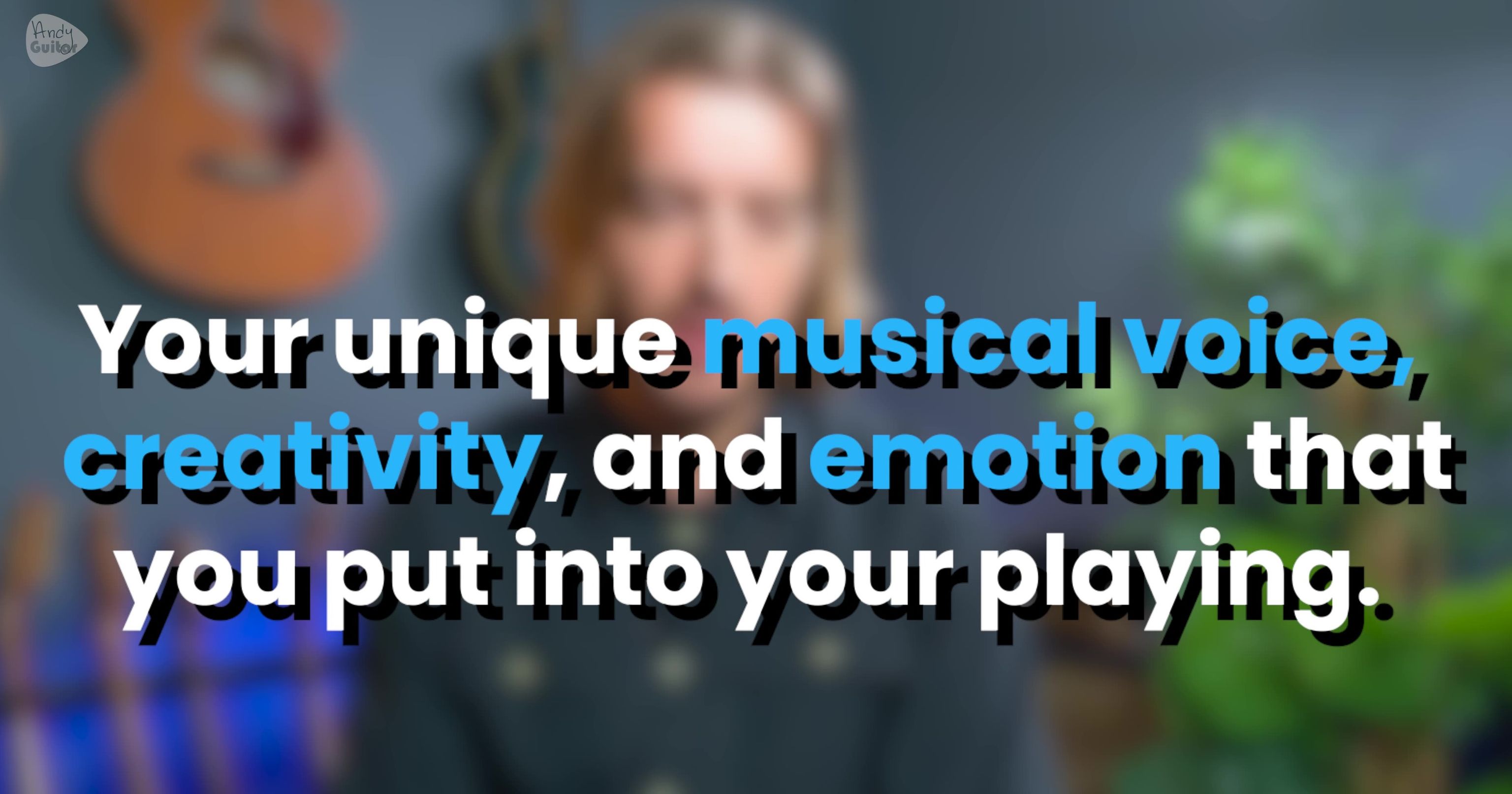In this video
I want to encourage you to start creating your own music. This means exploring your very own ideas: song writing, melody writing, improvising, lead lines and riffs
Craft = The technical skills: Scales, techniques, rhythmic accuracy, stylistic elements, and genre conventions.
Art = Personal expression: Your unique musical voice, creativity, and emotion that you put into your playing.
Key Idea: Great music blends both. Mastering craft helps you express yourself, but focusing only on craft can make your playing feel robotic.
Why Do Guitarists Struggle to Write Their Own Music?
Fear of not being "good enough" – Many think they need to be a master before creating. Not true!
Over-reliance on learning songs – Playing covers teaches craft, but it doesn’t help much with creativity.
Perfectionism kills creativity – Expecting to write a "great" song immediately prevents experimentation.
Practical Steps to Start Creating
Step 1: Start Small – Create from What You Know
Use a chord progression you already love and change one thing: strumming pattern, chord voicing, key, or tempo.
Take a scale you know (like minor pentatonic) and try to create a simple melody or riff instead of playing existing licks.
Step 2: Borrow & Transform
Steal like an artist! All musicians borrow ideas—just reshape them into your own style.
Example: Take a rhythm from one song, a chord from another, and a picking pattern from another—and make them your own.
Step 3: Limit Yourself for Maximum Creativity
Creativity thrives on constraints! Try writing something with:
Only 2-3 chords
One scale position
A strict rhythm pattern
Step 4: Record & Listen Back
Don't judge your first ideas—just record them. Even if it’s rough, you’ll start hearing what works and what doesn’t.
Part 4: How to Improve Both Art & Craft
Improving Art:
Play with intention—think about what you want a song or solo to feel like, not just sound like.
Explore different dynamics & phrasing to inject personality into your playing.
Try improvising without a backing track to see what melodies naturally come out.
Improving Craft (brief, since the course covers this!):
Continue building technical skills (scales, picking accuracy, timing) to give yourself more creative tools.
Study why songs work—analyse what makes certain progressions and melodies effective.
Your first original piece won’t be perfect—but that’s the point! The more you create, the more you'll develop your unique voice as a guitarist. So this week, I challenge you to create a short piece of music, even if it’s just a riff or chord progression. Drop a comment in the live streams or on the Discord channel and let me know what you come up with!

